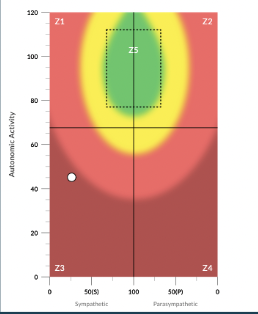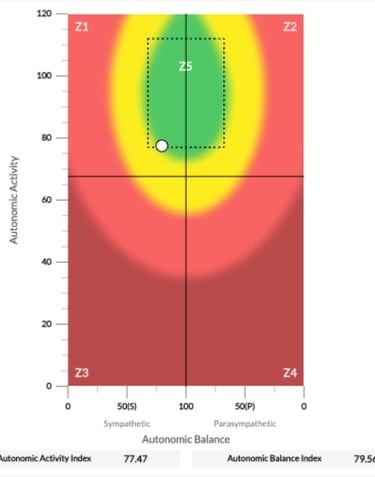Understanding Overwhelm in Kids and Adults
Feeling overwhelmed? You’re not alone—and neither are your kids. In this post, we explore how overwhelm shows up differently in adults and children, why it’s rooted in the nervous system, and how chiropractic care (including stress scans like HRV) can help bring calm and clarity back into your home.


Overwhelm happens when the stress and pressure in our lives exceed our capacity to process, cope, or regulate. And while adults might experience it through exhaustion, anxiety, or burnout, children go through it too—just in very different ways.
Adults: Spinning Plates, Dropping Balls
For grown-ups, overwhelm often builds slowly. You might be juggling work responsibilities, relationship pressures, parenting, and financial concerns—all while trying to stay “on top of it.” We pride ourselves on being able to manage a lot, but the truth is, our nervous systems can only take so much before they start to fray.
You might notice signs like:
Feeling constantly anxious or irritable
Trouble sleeping or unwinding
Forgetfulness or brain fog
A sense of drowning in responsibilities
Panic, shutdown, or explosive reactions to small triggers
That’s your body saying: “Too much.”
Kids: Big Emotions in Little Bodies
For children, overwhelm shows up differently—but just as powerfully. Because they don’t yet have the emotional vocabulary or regulation tools that adults do, they often express overwhelm through meltdowns, tantrums, defiance, clinginess, or withdrawal.
The triggers might seem small to us:
A change in routine
Transitions between activities
Sensory overload (too much noise, too many people)
Feeling misunderstood or rushed
Academic pressure or social struggles
But to a child’s developing brain and nervous system, these can be the tipping point. It’s not that they’re trying to be “bad” or “difficult”—their system is literally maxed out, and they don’t know what to do with it.
The Common Thread: A Nervous System Under Siege
Whether it’s a parent trying to juggle too many responsibilities or a child melting down after school, what we’re really seeing is the same thing: a nervous system stuck in overdrive.
Our bodies are designed to handle short bursts of stress. But when stress becomes constant and unresolved, we get stuck in "fight, flight, or freeze." And that’s when overwhelm takes over.
How Chiropractic Care Helps
This is exactly where chiropractic care—especially neurologically focused care—can make a life-changing difference.
In our office, we use advanced technology to look under the surface at how your nervous system is functioning. One of our favorite tools is something called HRV (Heart Rate Variability). It helps us measure how well your body is handling and adapting to stress.
Think of it this way:
A calm and balanced nervous system can handle a lot before it “freaks out.”
A stressed-out, stuck-on-edge system can only handle a little before it boils over.
Through gentle, specific chiropractic adjustments, our goal is to help bring the nervous system back into balance—so your body and brain can move from survival mode into healing mode.
And here’s the best part: we can actually track the progress. With our scans, we can see where your nervous system is today, how well it’s adapting, and how it improves over time with care.
Whether it's helping a child with frequent meltdowns or an adult on the edge of burnout, this approach provides real answers and real hope.
If you or your child are feeling stuck in a cycle of overwhelm, we’d love to connect with you. Let’s take a deeper look at how your nervous system is functioning—and start you on a path to greater calm, clarity, and connection.
Because you're not meant to live overwhelmed. You're meant to thrive.
When It’s All Too Much: Understanding Overwhelm in Kids and Adults
Have you ever felt like your brain just can’t take in one more thing? Like the to-do list, the texts you haven’t answered, the dishes, the deadlines—all of it is just too much?
That feeling has a name: overwhelm.




Before and after
Green is good,
Red is bad
